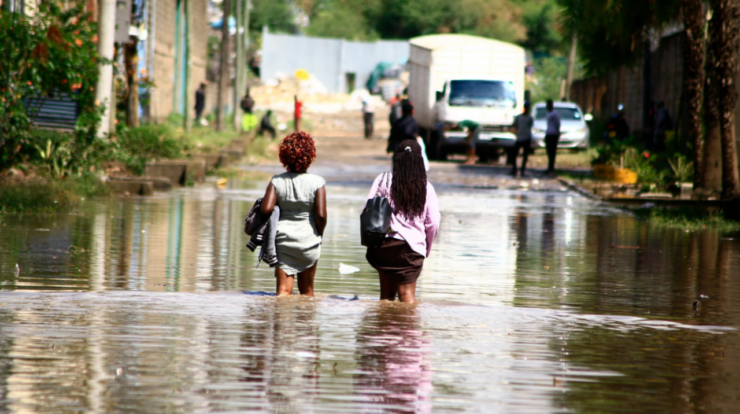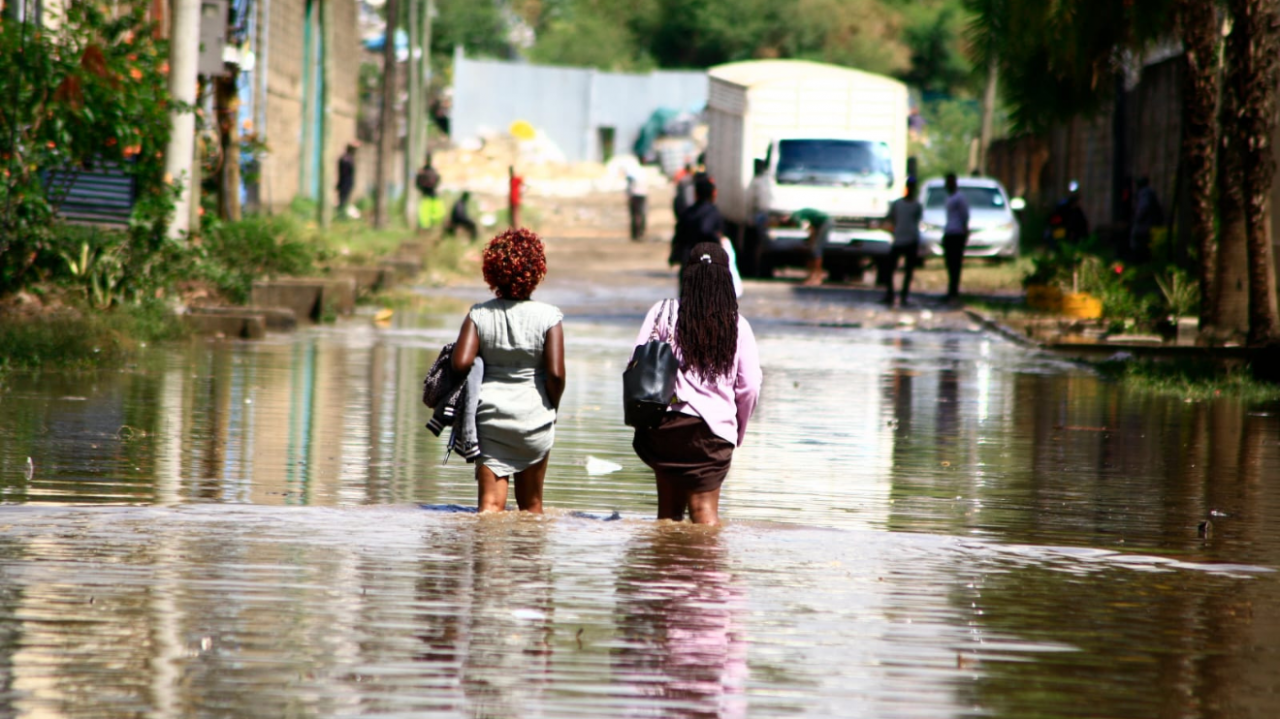
Kenya nairobi flooding – Kenya’s capital, Nairobi, has been grappling with severe flooding, leaving a trail of devastation and posing significant challenges to its residents. The city’s unique geographical features, coupled with inadequate infrastructure and urbanization, have created a perfect storm for this recurring crisis.
The relentless downpours have inundated homes, submerged roads, and disrupted livelihoods, leaving many residents displaced and vulnerable. The long-term effects of flooding on health, sanitation, and the economy are equally concerning, highlighting the urgent need for comprehensive solutions.
Causes of Flooding in Nairobi
Flooding in Nairobi has become an increasingly common occurrence, causing significant damage to property and infrastructure, and disrupting the lives of residents. Several factors contribute to the city’s vulnerability to flooding, including geographical characteristics, urbanization, and inadequate infrastructure.
Geographical Factors
Nairobi is located in a valley surrounded by hills, making it susceptible to flooding during heavy rainfall. The city’s topography also includes numerous rivers and streams, which can overflow during periods of high water.
Urbanization and Inadequate Infrastructure
Rapid urbanization has exacerbated flooding in Nairobi. The city’s population has grown significantly in recent decades, leading to increased demand for land and infrastructure. As a result, many new buildings and roads have been constructed on previously undeveloped areas, reducing the city’s natural drainage capacity.
Furthermore, the city’s drainage systems are often inadequate to handle heavy rainfall. Many drainage channels are blocked by debris and poorly maintained, leading to waterlogging and flooding.
Human Activities
Human activities can also contribute to flooding in Nairobi. Deforestation, for example, reduces the ability of the soil to absorb water, leading to increased runoff and flooding. Additionally, littering and improper waste disposal can block drainage channels, exacerbating the problem.
Impact of Flooding on Nairobi’s Population
Flooding in Nairobi has a significant impact on the city’s population, both in the immediate and long term.
Immediate Consequences
Flooding can cause widespread damage to homes, businesses, and infrastructure. It can also lead to loss of life, injuries, and displacement of residents. Additionally, flooding can disrupt access to essential services such as electricity, water, and sanitation.
Long-Term Effects
Flooding can have long-term effects on health, sanitation, and economic well-being. Standing water can become breeding grounds for mosquitoes, increasing the risk of malaria and other waterborne diseases. Flooding can also contaminate water sources, leading to waterborne illnesses.
Furthermore, flooding can damage infrastructure, disrupt businesses, and lead to job losses. This can have a significant impact on the economic well-being of individuals and families.
Government and Community Responses to Flooding

The government and local communities in Nairobi have taken various initiatives to mitigate flooding and respond to its impacts.
Government Initiatives
The government has implemented several measures to address flooding, including:
- Constructing new drainage channels and upgrading existing ones
- Dredging rivers and streams to improve their capacity to carry water
- Enforcing regulations to prevent construction on floodplains
- Implementing flood warning systems to alert residents of impending flooding
Role of Local Communities
Local communities also play a crucial role in disaster preparedness and response. Community members can:
- Monitor water levels and report any potential flooding risks
- Participate in cleanup efforts to remove debris from drainage channels
- Provide support to affected residents, such as providing food, shelter, and medical assistance
Proposed Solutions and Mitigation Strategies
Addressing flooding in Nairobi requires a comprehensive approach that includes both structural and non-structural measures.
Structural Measures
Structural measures include:
- Constructing new drainage channels and upgrading existing ones
- Dredging rivers and streams to improve their capacity to carry water
- Building flood walls and other physical barriers to protect vulnerable areas
Non-Structural Measures
Non-structural measures include:
- Enforcing regulations to prevent construction on floodplains
- Implementing flood warning systems to alert residents of impending flooding
- Raising awareness about flood risks and promoting flood preparedness
Best Practices for Flood Preparedness and Risk Reduction, Kenya nairobi flooding
Individuals and communities can take several steps to prepare for and reduce the risks associated with flooding:
- Be aware of flood risks in your area
- Develop a flood evacuation plan
- Keep important documents and valuables in a safe place
- Have an emergency kit ready
- Avoid driving through flooded areas
Lessons Learned and Recommendations: Kenya Nairobi Flooding
The analysis of flooding in Nairobi provides several key insights and recommendations:
- Flooding in Nairobi is a complex issue with multiple contributing factors, including geographical characteristics, urbanization, and inadequate infrastructure.
- Flooding has a significant impact on the city’s population, causing widespread damage, displacement, and health risks.
- Addressing flooding requires a comprehensive approach that includes both structural and non-structural measures.
- Government and local communities have a crucial role to play in mitigating flooding and responding to its impacts.
- Individuals and communities can take steps to prepare for and reduce the risks associated with flooding.
Further research is needed to explore the following areas:
- The effectiveness of different flood control measures
- The impact of climate change on flooding in Nairobi
- The role of land use planning in reducing flood risks
Ending Remarks
Addressing the underlying causes of flooding in Nairobi requires a multifaceted approach involving government initiatives, community engagement, and sustainable urban planning. By implementing effective flood control measures, investing in resilient infrastructure, and promoting disaster preparedness, the city can mitigate the devastating impacts of future floods and build a more resilient future for its residents.
FAQs
What are the primary causes of flooding in Nairobi?
Nairobi’s geographical location, characterized by low-lying areas and poor drainage systems, makes it susceptible to flooding. Rapid urbanization and inadequate infrastructure further exacerbate the problem, as increased impervious surfaces reduce water absorption and overwhelm drainage capacity.
How does flooding impact the lives of Nairobi residents?
Flooding poses immediate threats to life and property, displacing residents and disrupting livelihoods. The long-term consequences include increased health risks due to waterborne diseases, sanitation issues, and economic losses caused by infrastructure damage and business closures.
What role does the government play in addressing flooding in Nairobi?
The government has implemented various initiatives to mitigate flooding, including constructing dams and reservoirs, improving drainage systems, and implementing flood warning systems. However, challenges remain in terms of funding, coordination, and community engagement.
What are some potential solutions to address flooding in Nairobi?
Long-term solutions include investing in green infrastructure such as parks and wetlands, promoting permeable surfaces to enhance water absorption, and implementing flood-resilient building codes. Community-based initiatives, such as early warning systems and disaster preparedness training, are also crucial for reducing vulnerability.





